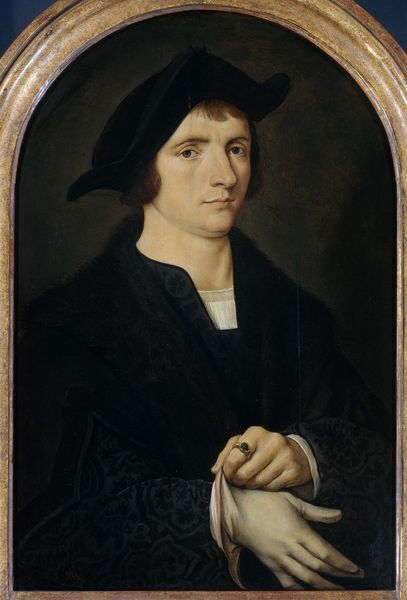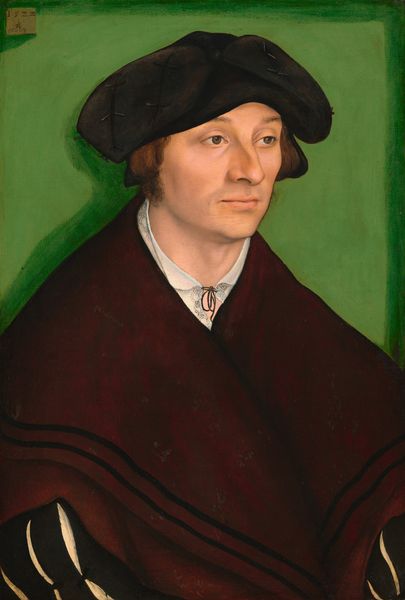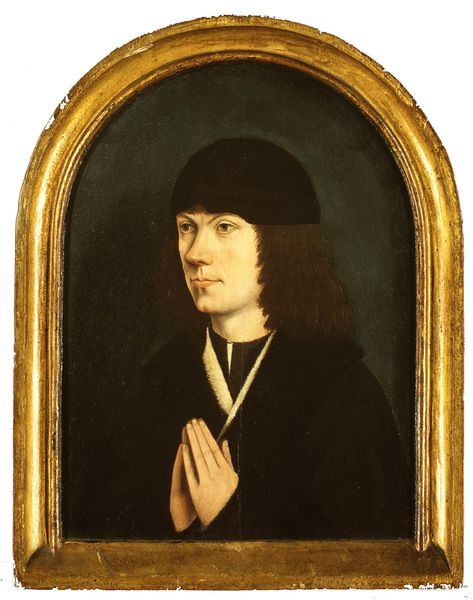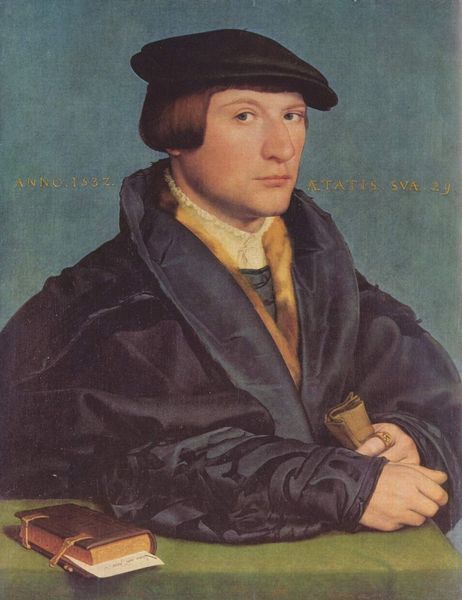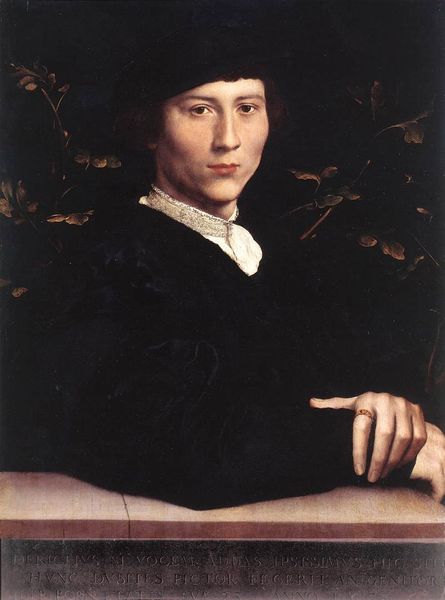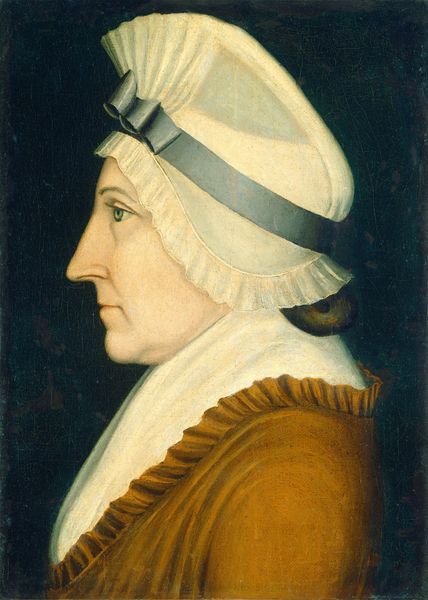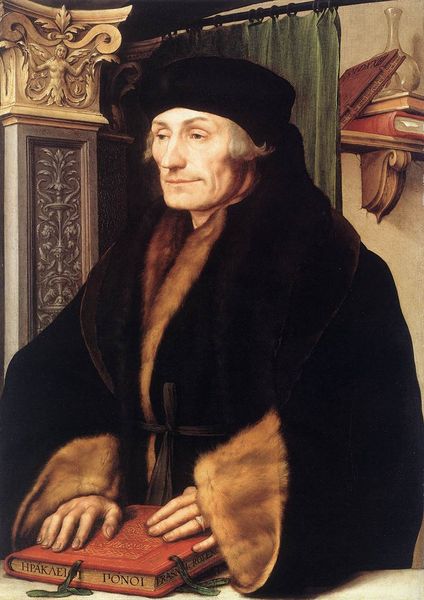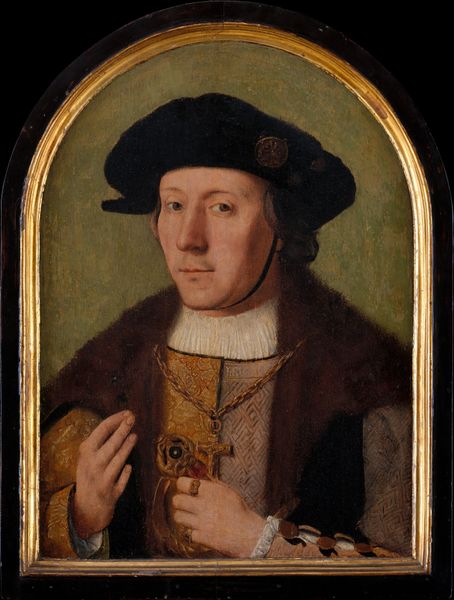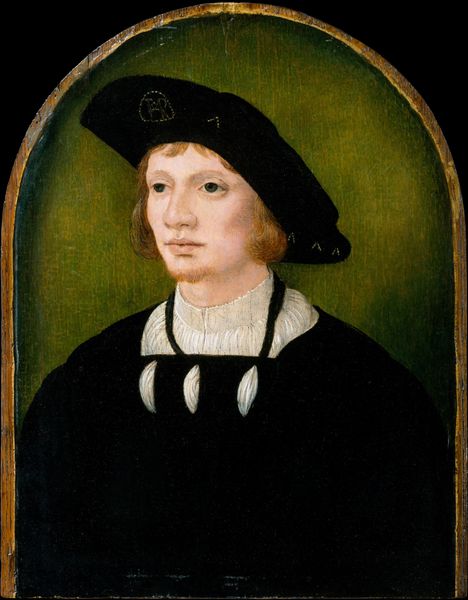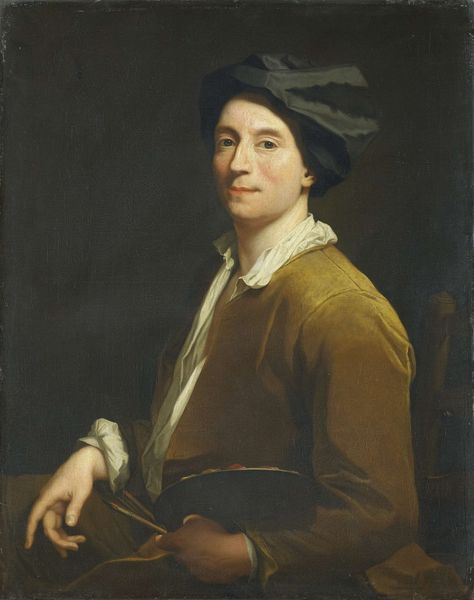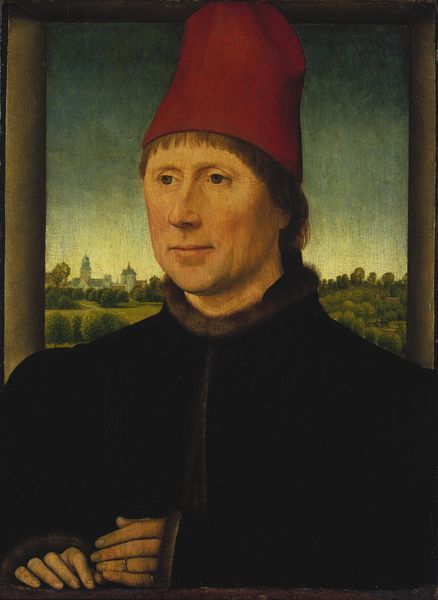
painting, oil-paint
#
portrait
#
painting
#
oil-paint
#
11_renaissance
#
northern-renaissance
#
academic-art
Dimensions: painted surface: 56.3 x 38.2 cm (22 3/16 x 15 1/16 in.) overall (panel, rounded top): 58 x 40 cm (22 13/16 x 15 3/4 in.) framed: 66 x 48.9 cm (26 x 19 1/4 in.)
Copyright: National Gallery of Art: CC0 1.0
Editor: Here we have Joos van Cleve’s portrait of “Joris Vezeleer,” painted around 1518. It’s an oil painting and, looking at it, I’m struck by the sitter’s cool detachment. How do you interpret this work? Curator: This portrait compels us to consider the social position of the sitter in 16th-century Antwerp, doesn't it? Joris Vezeleer, identified by inscription, was clearly part of a rising merchant class. Think about the power dynamics embedded in portraiture itself: who had the means to commission such a work? What messages about status, wealth, and identity were being conveyed? Editor: So, the act of painting his portrait becomes almost a political statement in itself? Curator: Exactly! And look at the details: his fashionable black clothing, the jewel on his finger, even the gloves. These aren't just aesthetic choices; they're indicators of economic power and social aspiration. Van Cleve, by capturing these details, participates in constructing a very specific narrative. Does the painting challenge existing social structures, or reinforce them? Editor: It’s fascinating how something that looks so straightforward can be interpreted on so many different levels. Do you think his expression is a deliberate choice, a way of projecting an image of self-assurance? Curator: That’s a key question. Consider the context: Antwerp was a booming mercantile center. His slightly aloof expression might be less about personal arrogance and more about projecting an image of a successful and shrewd businessman, confident in his dealings and aware of his place in this competitive social environment. And what of those who *weren't* portrayed? What voices are missing in this grand narrative? Editor: It's made me consider portraiture as a document of social history more than simply an artistic depiction of a person. Curator: Precisely! It highlights the intersectional layers of art history, economics, and social identity, reminding us that representation is always political. Editor: Thank you! That's a fresh perspective, one I wouldn’t have considered initially.
Comments
No comments
Be the first to comment and join the conversation on the ultimate creative platform.
